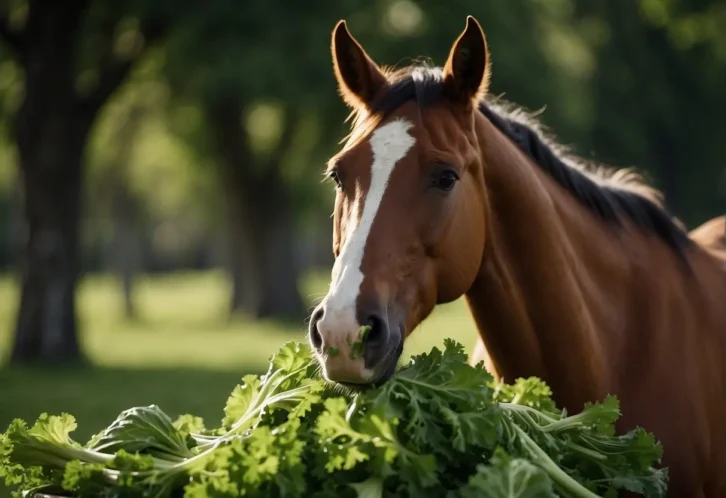What Do Wild Horse Eat: Unveiling the Secrets of Their Natural Diet
Wild horses, icons of freedom and resilience, have a surprisingly diverse diet that fuels their adventurous lives. Ever wondered how they thrive in everything from lush meadows to rugged deserts? Let’s unveil the secrets of what wild horses eat and how their diet impacts their survival.

The Wild Horse’s Menu: A Feast for All Seasons
Wild horses are primarily herbivores, meaning their diet is plant-based. They’re not picky eaters and have adapted to consume a variety of vegetation depending on their environment and the season.
- Grasses: The staple of a wild horse’s diet. They graze on various types of grasses, which provide essential fiber for their digestive system.
- Forbs and Herbs: These flowering plants add flavor and essential nutrients like vitamins, minerals, and antioxidants to their meals.
- Shrubs and Bark: In tougher times or during winter, when grasses are scarce, wild horses turn to shrubs and even tree bark for sustenance.
- Fruits and Nuts: When available, wild horses enjoy a sweet treat of fruits and nuts, adding a boost of energy and nutrients to their diet.

Thriving in Tough Terrain: Water and Wild Horses

Water is crucial for wild horses’ survival, especially in arid environments. They have developed remarkable adaptations to find and conserve water:
- Natural Water Sources: Rivers, streams, ponds, and lakes are essential water sources for wild horses.
- Snow as Hydration: In colder climates, wild horses can even eat snow to meet their water needs.
- Desert Survival: In arid regions, wild horses may travel long distances to find oases or hidden springs.
Grazing Patterns and Social Bonds
Wild horses are social animals, and their feeding behavior reflects their herd dynamics:
- Grazing Together: Herds typically graze together, with the dominant horses securing the best feeding spots.
- Learning from the Herd: Foals learn what to eat and where to find food by observing their mothers and other herd members.
- Cooperation for Survival: In harsh conditions, wild horses work together to find food and water, ensuring the survival of the entire herd.

Wild vs. Domestic: Dietary Differences
The diets of wild and domestic horses differ significantly due to their environments and human intervention:
| Feature | Wild Horses | Domestic Horses |
|---|---|---|
| Diet Variety | High: Grasses, forbs, shrubs, fruits, nuts, etc. | Low: Primarily hay and grain, with limited variety |
| Grazing | Continuous throughout the day | 2-3 meals per day |
| Supplements | Natural: Forbs, herbs, fruits, nuts | Artificial: Vitamins, minerals, other supplements |
| Health Impact | Generally healthier due to diverse diet and grazing habits | Prone to digestive issues due to lack of variety |
FAQs: Your Burning Questions About Wild Horse Diets
What is the main food source for wild horses?
Grasses are the primary food source for wild horses.
What do wild horse eat in winter?
They eat twigs, tree bark, and dead leaves when grasses are scarce.
Do wild horses eat fruits?
Yes, they enjoy fruits when available.
How do wild horses survive in deserts?
They travel long distances to find water and can even eat snow in colder climates.
The Enduring Spirit of Wild Horses
The diet of wild horses is a testament to their adaptability and resilience. Their ability to thrive on diverse food sources in varying environments is a key factor in their survival. By understanding their natural diet, we gain a deeper appreciation for these magnificent creatures and the importance of preserving their habitats.
Eager to learn more about horses? Explore our other horse articles!
Follow AnimalVine on Google News!




